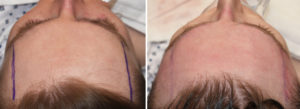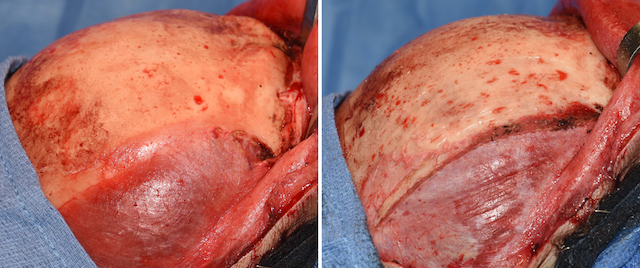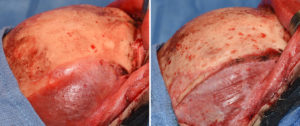Facial gender identity is highlighted by several facial areas or zones. One of these facial areas in the upper third of the face or forehead. The relevance of this is seen in facial feminization surgery where the most consistent procedure performed is forehead reshaping surgery in most transgender male to female patients. The more convex shape and lack of brow bones in female foreheads is in contrast to the broader and flatter forehead shape with brow bones that a male has.
In traditional transgender male to female forehead reshaping surgery the central brow bone prominences are most commonly reduced. Usually through bone removal, reshaping and replacement, the brow bone prominences that are the result of frontal sinus expansion are successfully treated.
But for some patients brow bone reshaping alone represents an incomplete forehead reshaping approach. What lies above the brow bones still occupies a lot of forehead surface area. In further feminizing the forehead its dimensions of width, slope and convexity are also shape issues to consider.


Of the bony prominences that can be reduced in forehead reshaping that of the temporal lines is often overlooked. Given that it is in the same surgical field as brow bone reduction it is the most convenient time to incorporate this forehead width reduction dimensional change if indicated.
Dr. Barry Eppley
Indianapolis, Indiana






